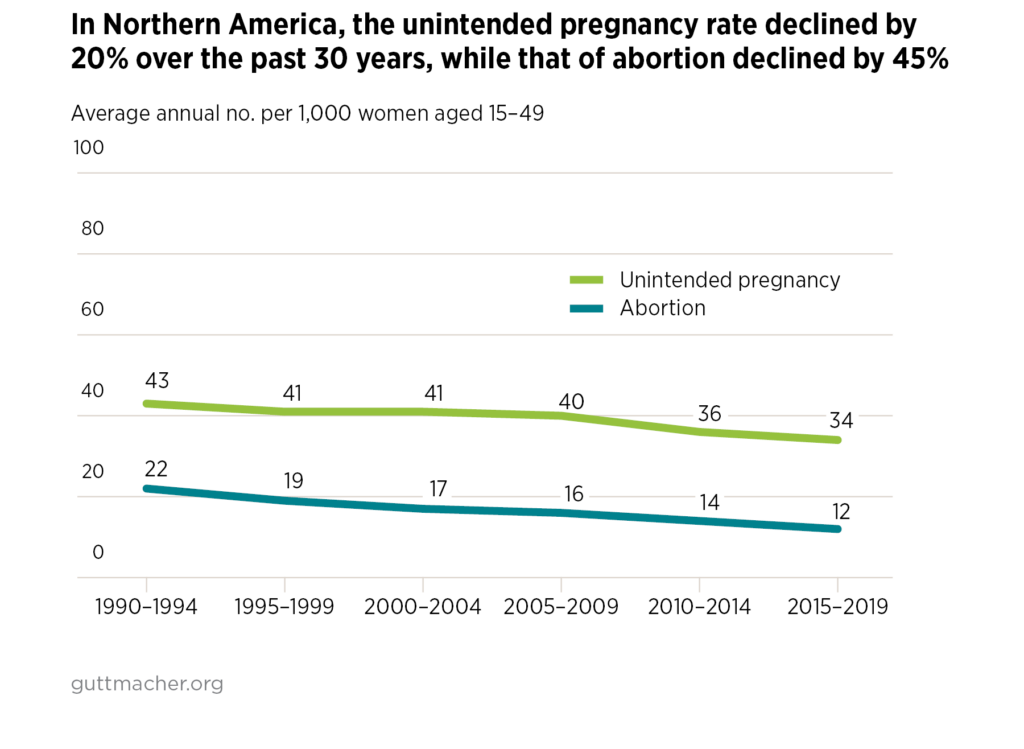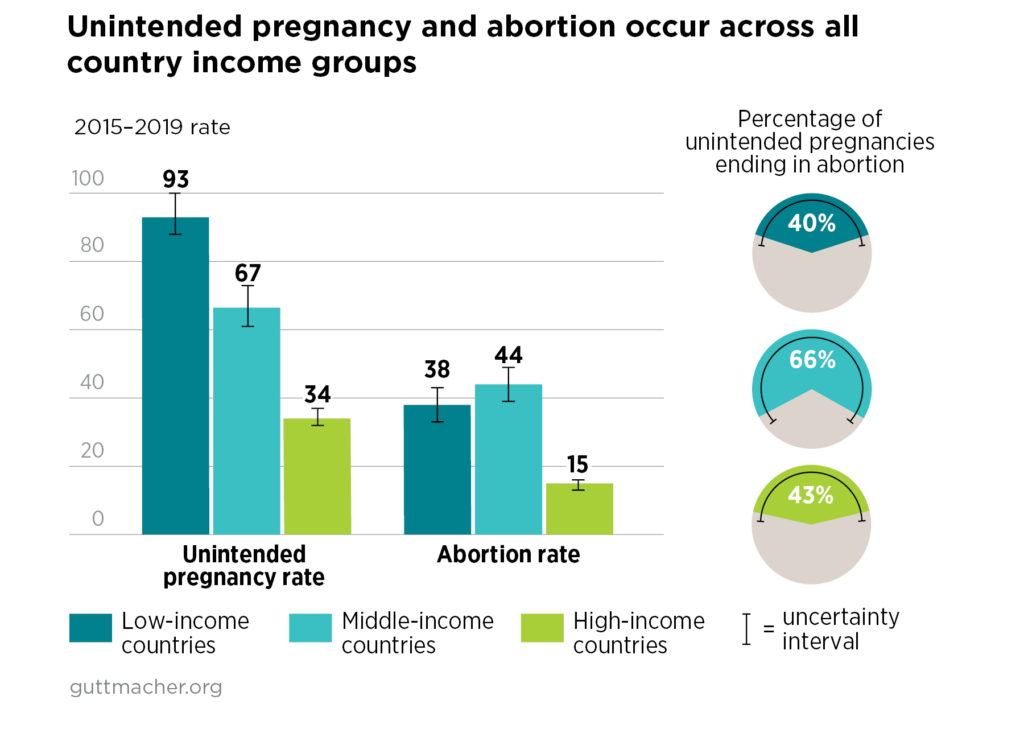Together with the World Health Organization, the Guttmacher Institute recently released “Country-Specific Estimates Of Unintended Pregnancy And Abortion Incidence: A Global Comparative Analysis Of Levels In 2015–2019.”
According to the authors, the study, recently published in BMJ Global Health, is intended to “illuminate disparities in sexual and reproductive health and autonomy”1 on a global scale.
A closer look reveals a deeper theme: the “research” is simply the latest installment in the abortion lobby’s efforts to eliminate virtually every pregnancy on the planet that is not specifically planned.
The study demands more “equitable investment” in sexual and reproductive healthcare. In other words, more funding for their campaign to achieve the global legalization of abortion on demand.
The study poses as the first-ever global comparable analysis of abortion rate estimates, superior to previous studies limited to single and/or in-country studies, different time periods, and methodological differences which rendered much of the data incomprehensible.
This new study, on the other hand, collects data from 195 countries over the course of a five-year period from 2015 through 2019 among women of reproductive ages approximately 15-49. The authors also incorporate previous data from each five-year time periods from 1990-1994 through 2015-2019. Including information from past studies, they claim informs estimates with greater certainty, as well as shedding more light on current trends. With these findings, they expect to “possibly assess the impact of large-scale programmes in the future.”2
According to Dr. Herminia Palacio, Guttmacher Institute President and CEO, “Having current and reliable data at hand will not only help identify and find solutions to disparities, but also make a case for smarter investments that deliver impact.”3 This, of course, goes hand in hand with the organization’s mission statement and thus reinforces the goal of the analysis.
That goal, based on country-specific estimates of the proportion of unintended (or unplanned) pregnancy births and unintended pregnancy abortions, is the targeting “investment to where it is most needed.”4 To accomplish this, the study’s researchers developed a model that has several components: 1) estimates of the proportion of births and abortions from “unintended” pregnancies; 2) information taken from surveys, official statistics and public data “on contraceptive needs and use; 3) the proportions of women who do not want to become pregnant and whether they are using contraception;5 and 4) positive pregnancy intentions and births. This was done so that researchers might feasibly produce estimates that are as balanced as possible given the data limitations in order to compare country and regional averages, given that reliable data on some countries is not available.
Researchers collected regional averages for 195 countries and territories, but limited the published study’s findings to 150 countries due to limitations in the data available. According to the researchers, reliable data was widely unavailable in certain subregions of the Middle East and Northern Africa.
Despite the lack of data from those subregions, researchers did find that unplanned pregnancy rates were found in the highest number among women living in lower-income countries and countries that restrict abortion access. Conversely, the number was lower among women who live in higher-income countries where the lethal procedure is broadly legal, where researchers noticed a greater access to “family planning.”
However, the lower average unplanned pregnancy rates among higher-income countries apparently reflects the lower unplanned pregnancy rates in both Europe and Northern America. South Korea, Japan and Singapore also all had below-average estimates for high-income countries in Eastern and Southeastern Asia.
Referring to a factsheet prepared by the Guttmacher Institute regarding the study, the authors write:
“In the United States, the unintended pregnancy rate declined by 23% between 1990–1994 and 2015–2019. During the same period, the abortion rate declined by 48%. The share of unintended pregnancies ending in abortion fell from 50% to 34%. In 2015–2019, there were a total of 5,660,000 pregnancies annually. Of these, 2,590,000 pregnancies were unintended and 886,000 ended in abortion.”6

In other words, some 15%, or slightly more than one out of seven, of the total annual pregnancies through 2015-2019 ended in abortion.
When considering the differences between rates for countries and regions, the numbers vary and can seem inconclusive. However, the numbers do tell that we are seeing a massive spike in the use of contraception across the board.
As the study demonstrates, there was a steady decline in unintended pregnancy rates since the 1990s which reflects the wide use of contraception. On the other hand, the abortion rate has since then fluctuated. According to the authors of the study, the proportion of unplanned pregnancies ending in abortion was some 51% in the period 1990-1994 and seemly decreased within the next 10 year period however it later spiked to 61% within the period from 2015-2019.
That means that in the 2015-2019 period there were about 121 million unplanned pregnancies and of those unplanned pregnancies some 73 million ended in abortions annually worldwide.
The data collected for this study resulted from a consultation process. WHO country members joined research teams at the UNDP, UNFPA, UNICEF, WHO, World Bank Special Program of Research, Development and Research Training in Human Reproduction (HRP). As defined by the Guttmacher Institute, HRP is the “main instrument within the United Nations system for research in human reproduction, bringing together policymakers, scientists, health care providers, clinicians, consumers and community representatives to identify and address priorities for research to improve sexual and reproductive health.”
The Guttmacher Institute maintains that the study’s estimates are essential to inform policy makers and programming on an international level. Only then can they make decisions regarding investment in access to contraception and comprehensive abortion care.

Jonathan Bearak, a senior research scientist at Guttmacher Institute and author of the study, wrote “The proportion of unintended pregnancies ending in abortion—as great as 68%, even among countries that completely prohibited abortion—illustrates the strength of the desire of millions of women and adolescents to avoid unplanned childbearing.”7
In his book Population Control, Steven Mosher, President of PRI, makes note that organizations like the WHO and International Planned Parenthood Federation replace simple concepts such as unplanned or unwanted pregnancy with bizarre definitions such as “unintended pregnancy” in order to fool the casual unsuspecting reader while shamelessly producing the outcomes they seek. This may explain why the Guttmacher Institute includes contraception and comprehensive abortion care under the term “family planning” and consider it a right under women’s sexual and reproductive healthcare.
The estimates from this study were calculated to further inform policy makers and countries around the world to better implement the “WHO’s new guidelines for quality abortion services.”8 But do not be fooled, even before these estimates were published organizations like the Guttmacher Institute seized the opportunity given during the Pandemic to push for “sexual and reproductive health and rights” and shamed countries who were not classifying abortion as essential.
Although the unplanned pregnancy rate is generally higher respective to abortion rates these estimates reveal how population control agencies and their buddy organizations are trying to eliminate every unplanned pregnancy, whether that be through the use of contraceptives, abortifacients, or abortion itself. That is their ultimate goal and it comes at the expense of countless lives, for every abortion has two victims—one dead and one injured.
******
1 https://gh.bmj.com/content/7/3/e007151#block-system-main
2 Ibid.
3 https://www.guttmacher.org/news-release/2022/first-ever-country-level-estimates-unintended-pregnancy-and-abortion.
4 Ibid.
5 Ibid.
6 https://www.guttmacher.org/fact-sheet/unintended-pregnancy-and-abortion-northern-america
7 https://www.guttmacher.org/news-release/2022/first-ever-country-level-estimates-unintended-pregnancy-and-abortion.
8 Ibid.











